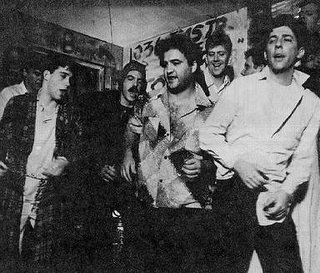The Dems are all aflutter about the
analysis by UW Professor Andrew Reschovsky of the "devastating impact" of the Taxpayer Protection Amendment. Basically, Reschovsky calculates that, had TPA been enacted in 1985 and its revenure caps had never been exceed, state government would have to spend 30% (or 5 billion dollars)less than it actually spent in 2005. You can read some of our liberal friends being impressed by this
here and
here.That this would be a disaster is assumed, if not proven. What would you cut, they ask, and some conservatives have
tried to provide an answer.
More fundamentally, Reschovsky argues that, by capping revenue growth by the rate of inflation, the TPA would have reduced government as a percentage of the state's economy which, over the period in question, grew in real terms (i.e., personal income growth beat inflation). Thus, he concludes, the TPA is a ruse to reduce the percentage of the income that goes to government.
My initial response to this is sort of along the lines of "No s***, Sherlock." As income grows faster than inflation (something which doesn't necessarily happen and which might not happen over the next twenty years), we are generally able to devote that additional income to new things. Over time, the percentage of income that human beings spend on meeting their basic needs has declined. That's progress.
So there is no Platonic Ideal that says that the percentage of income that goes to government must remain the same at all times and in all places. Reschovsky's answer seems to be little more than "we can afford it" and therein lies the rub. If the money is there, it will be spent.
What have we gained by allowing government to grow at a rate greater than the rate of inflation. If goverment has gotten a "real" (after inflation) increase in income, has it delivered more to the taxpayers? Are the roads better? Are the schools more effective? Have we pulled more people out of poverty? I am skeptical.
And Reschovsky, unwittingly, provides the reason that none of this has happened. The reason, in his view, that government has "had to" grow at a rate higher than the rate of inflation is that the things which government must pay for have increased at a faster rate.
What are those things? Here is the money line:
"
A substantial share of their budgets goes to pay for the services of highly-skilled labor, for example, police officers, teachers and doctors.>" Although throwing doctors in there is misleading (the state doesn't employ a lot of doctors and its reimbursements for medical services apart from its employee benefit packages are well below market), he's got it exactly right. The state's cost have increased at a pace above the rate of inflation because its labor costs - what it pays to state employees in wages and benefits - have done so. Reschovsky makes this sound like it is the result of the inexorable operation of the free market, but that just isn't so. The wages of these particular "highly-skilled" laborers is set through negotiations with politically powerful public employee unions; special and highly-invested interests who exert a disproportionate influence over the political process.
And that's the rationale for the TPA. Its an attempt to redress an imbalance on the playing field by requiring that increases that exceed the general increase in the cost of living and in the number of citizens to be served should be taken to the people.
Personally, I'd prefer that the authorization to exceed caps be undertaken by a legislative super-majority since I dislike referenda. But the idea that there must be greater intentionality to permit government to simply expand to take the next available money has merit. As Reschovsky's study unintentionally demonstrates.














